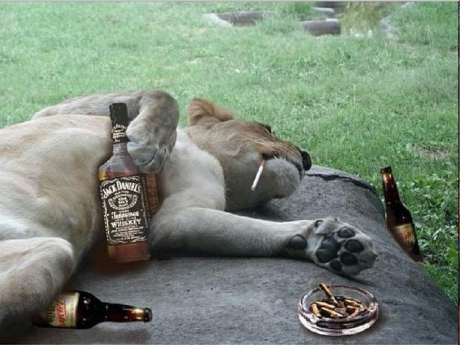
A story of Lions and Excess…
The Cannes International Festival of Advertising is finis. All over Adland people are back at their shops tweaking layouts, creating and debating Power Points and churning out banners. The business of marketing continues. Yet the hangover persists. Not from the overpriced rose’ in Cannes but from its overwrought festival. In the wake of Publicis’ controversial decree to forgo one year of entering work into Cannes or any other awards show, a hazy doubt remains, wafting in it lingering questions about the role of award shows, the cost to participate, and the value they provide.
No doubt award shows had their place, back when work was difficult to share and people harder to connect. But in the age of social media, nothing could be farther from the truth. Everyone sees everything. Shit is condemned. Cream rises to the top. By the time an ad wins an award it has been praised or vilified ad nauseam. Awards have become anti-climactic. Gilding the Lily if you will. Of course recognition is critical for agencies and their people. But claiming prizes well after the fact is antiquated.
But there’s another mitigating fact. Award shows cost a ton of time and money for agencies to participate. I think more than an App named Marcel, this is the real reason Publicis CEO, Arthur Sadoun pulled the plug. In these increasingly difficult times, he saw millions of dollars in savings. The bottom line is the bottom line.
And for this, we cannot blame him. I believe it costs around a thousand dollars to enter a piece of work at Cannes into a sole category. And there are thousands of categories with more every year. Nearly 1,500 Lions were given out this year. Out of God knows how many entries. You do the math. Agencies desperation to win coupled with outright greed by award show executives created a perfect storm. One must pay to play. The gross is gross.
I don’t think award shows should go away –necessarily- but clearly they need to be brought down to earth. There are too many shows with too many categories. Period.
Forget the many losers at Cannes. Let’s look at two of the biggest winners.
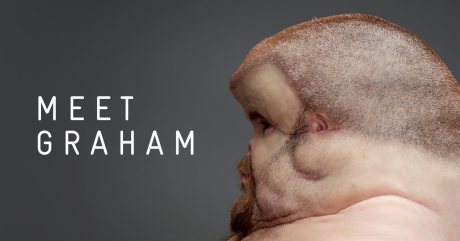
“Meet Graham”
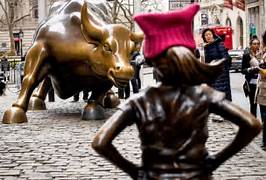
“Fearless Girl”
Clemenger BBDO Melbourne was awarded 29 Lions & 2 Grand Prix for their “Meet Graham” campaign. McCaan New York received 18 Lions and 4 Grand Prix for their “Fearless Girl” statue on Wall Street. No question these are wonderful and deserving ideas. But 18 and 29 Lions? That’s icing on the icing on the icing. We may crave the sugar but it’s not good for anyone. Except, of course, the executives at Cannes. They’ll gladly exchange statues for cash.
If only a handful of Lions were given out they would mean so much more. But the current system demand quantity. The solution: Make the show a salon for great work and only give the most brilliant a prize. More like the film festival, which takes place a month before. Hell, if they can do it so can we. I know it’s a tough pill for the many profiteers to swallow. But it’s the right thing to do.
For copy, content and creative direction: https://steffanwork.wordpress.com/

Though stinging, I love this gag Tweet from Adweak. Many a Superbowl I spent gripping my phone (or radiating my balls via laptop) racing the commercial feed on TV, and countless other assorted creative types, to try and get in a witty and insightful Tweet. Then another. And another. Of course I also needed to embellish my comments with a unique and brilliant hash tag, this in addition to the tag we’d been assigned. Thank God for the reemergence of 60 second TVC’s. Those extra seconds were gold.
Speed dating for “likes” and “retweets.” Such was the privilege of being selected by one trade pub or another to “live Tweet” the commercials playing during the Superbowl. During Twitter’s heyday it was vogue behavior. What it really accomplished was nil but being chosen fed my ego as a genius creative, enabling my on the money insight and rapier wit. And I was hardly alone. Big names from our industry were sucked in as well. For three hours and change we were the in-crowd. The creative community speaks! Follow us and learn. We know how to vivisect a TVC. In real time no less. (Unless, of course one pre-wrote his tweets having screened the commercials weeks in advance.)
Oh, the grandiosity of it all. To think that legions of my peers, clients and well-wishers were hanging on my every Tweet. Such folly. (Though I won’t deny being retweeted by Adweek made me giddy.
Still, by the third quarter I was numb. Spilling nacho cheese on my computer and dirty looks from my wife did not make the experience better. “Who’s the idiot on the laptop?” “Oh, that’s my husband. He’s doing it for work.”
But, hey I was changing the world. My opinions were becoming part of a national conversation, one that the 90 million people actually watching the game were excluded from. The next morning I would have hundreds of new followers. My Klout score (remember that?) would be through the roof.
Didn’t happen.
I’m not saying real time social commentary doesn’t work. Millions upon millions do it. The peanut gallery is vast. Lovers and haters and trolls spit fire and throw shade. The Superbowl and other massive “live” events draw legions of flies. But choreographing a VIP community is futile in this mob, forcing a reality where every member is sending and no one is receiving. Moreover, a bunch of creative directors spit balling Super Bowl commercials on Twitter reeks like an old idea. #whogivesashit
This Sunday my fingers are on the chicken wings, not my phone. That is, unless AdAge hits me up. My Tweets are pure gold!

“You’re in the great game now…”
Adweek published a story asking the big winners at Cannes 2016 what their “secrets to success” were. You could read the article here or just stay with me and I’ll tell you how to win at Cannes. Forget analysis and trendspotting. Don’t be mystified by all the never-ending categories either. Winning at Cannes has more or less relied on the same formula for years.
First and foremost, do great work. Then get it seen and talked about. This one-two punch, by the way, is the same formula for ANY awards show.
Ideally, at least some of your great work should be real. Real means it went through the gauntlet known as your client (not to mention your agency’s often debilitating process) was brilliantly produced, ran in genuine media, and received boffo results.
Enter the shit out of it.
But, dear friends, you know as well as I do, that it doesn’t end there.
Long ago intrepid creatives learned how to game the system. At first simple cheating, what this looks like now is far more, shall we say, ornate. Boiled down it means mimicking the legitimate. Something like this: Create gorgeous work, share it with select others internally, maybe have a friendly client smile at it wistfully, then run it on your own dime somewhere cost efficient or, even free, like posters at the local coffee shop or via some innocuous website. Take a bunch of pictures of it “in situation,” make a case study video and voila: you have award show bait!
Enter the shit out of it.
Professional winners have huge budgets for entering shows and a complicit team doing it. Mixing in fake campaigns with real creates a juggernaut that is hard to untangle. A few real pieces win; a few scams. Who knows which is which? Who cares – the agency clearly does good work.
Be part of a network that knows all the ins and outs. Networks have a regular, sustained presence and they will massage the process to help you win. Networks know people in high places. Networks get judges into shows. Networks have wags who do interviews, predictions and the like i.e. Global Creative Directors. Networks do PR. Networks spend money.
Gaming the system has become the system. Varying degrees of corruption are tolerated for the greater good. A few unfortunates get caught and thrown to the –ahem- lions. The rest is the rest. If it looks like a winner and comes from a winner then, by golly, it is a winner!
The agencies that won the most at Cannes do all of the above, legitimately and otherwise. Been this way for years.
Recalling beer wars of old, Miller Coors distributors kill new Leinenkugel’s ad campaign.
April 1, 2016
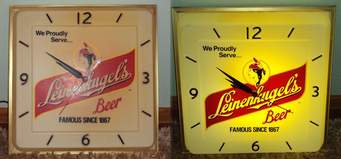
Time for a new campaign…
The headline in AdAge: “Miller Coors Distributors nix planned Leinenkugel’s campaign.”
It’s a story as old as the advertising business, though less common now than it was in the 80’s, when distributors, wholesalers and franchisees held significant power over even CMO’s. And no categories felt it more than QSR (fast food) and spirits, especially beer. (Car dealers had their own version but that’s another story.)
Silverbacks and students of Adland might remember the burger and beer wars. Rivals like Burger King and McDonald’s duked it out for market share, often quite publicly. Ad Agencies battled for their client’s supremacy like the loyal henchmen they were. And with Mafioso bravado, if a brand teetered from it’s position, the agency’s campaign and its creators were the first to get whacked. In this way, agencies became heated rivals as much as the companies they represented.
Fighting over AOR status for one of these clients was equally vitriolic. Back in the day, DDB and Leo Burnett fought ceaselessly over the McDonald’s account. Anheuser Busch pitted its agencies against one another for sport. In both cases, ketchup and beer spilled like blood.

Screen grab from the good old days…
Here we have a remnant of that skullduggery. My guess is the distributors wanted a more predictable, macho approach to “their commercials” than what San Francisco shop, Venables & Partners came up with, which features a quirky group of Wisconsinites playing an impromptu version of Boston’s “More than a Feeling” on a lakeshore up north in the Dairy State. The tag: “Welcome to the Leinie Side.” (You can watch the commercial in the AdAge Article here. )
Is it the best commercial ever? No. But it has an understated, shaggy charm that I think fits the brand to a “T.” I like the spot. Moreover, I think young adults would have to. If Leinie’s mission, under the glaring watch of Miller Coors, was and is to expand the brand’s popularity nationwide this funky take on Wisconsin hipsters (such as they are) probably makes a lot of sense. The spot has a light touch. And, who, if only secretly, doesn’t love Boston?
I’m guessing the Goombah wholesalers demanded hotter chicks, more jocks, and club music. That or a blue collar Wisconsin, more about hunting, fishing and campfires – a linear evolution of the family heritage campaigns Leinenkugal’s did for years before selling (out) to Miller Coors.
Rightly or wrongly, the dealers won. We can only morbidly wait to see their “fix.” It’ll probably look a lot like this:
An older spot, ripe with obvious…




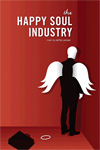 The Happy Soul Industry
The Happy Soul Industry The Last Generation
The Last Generation